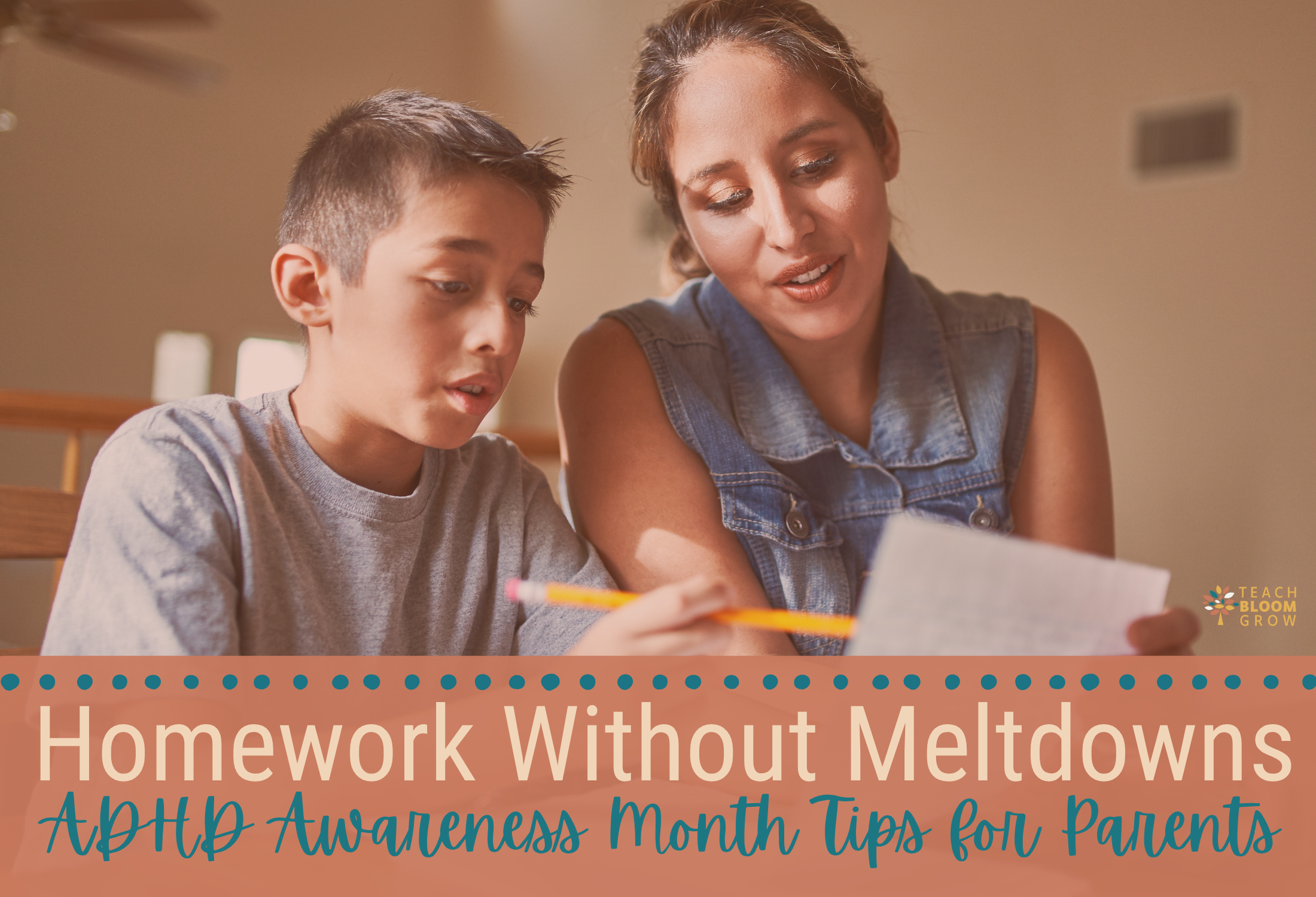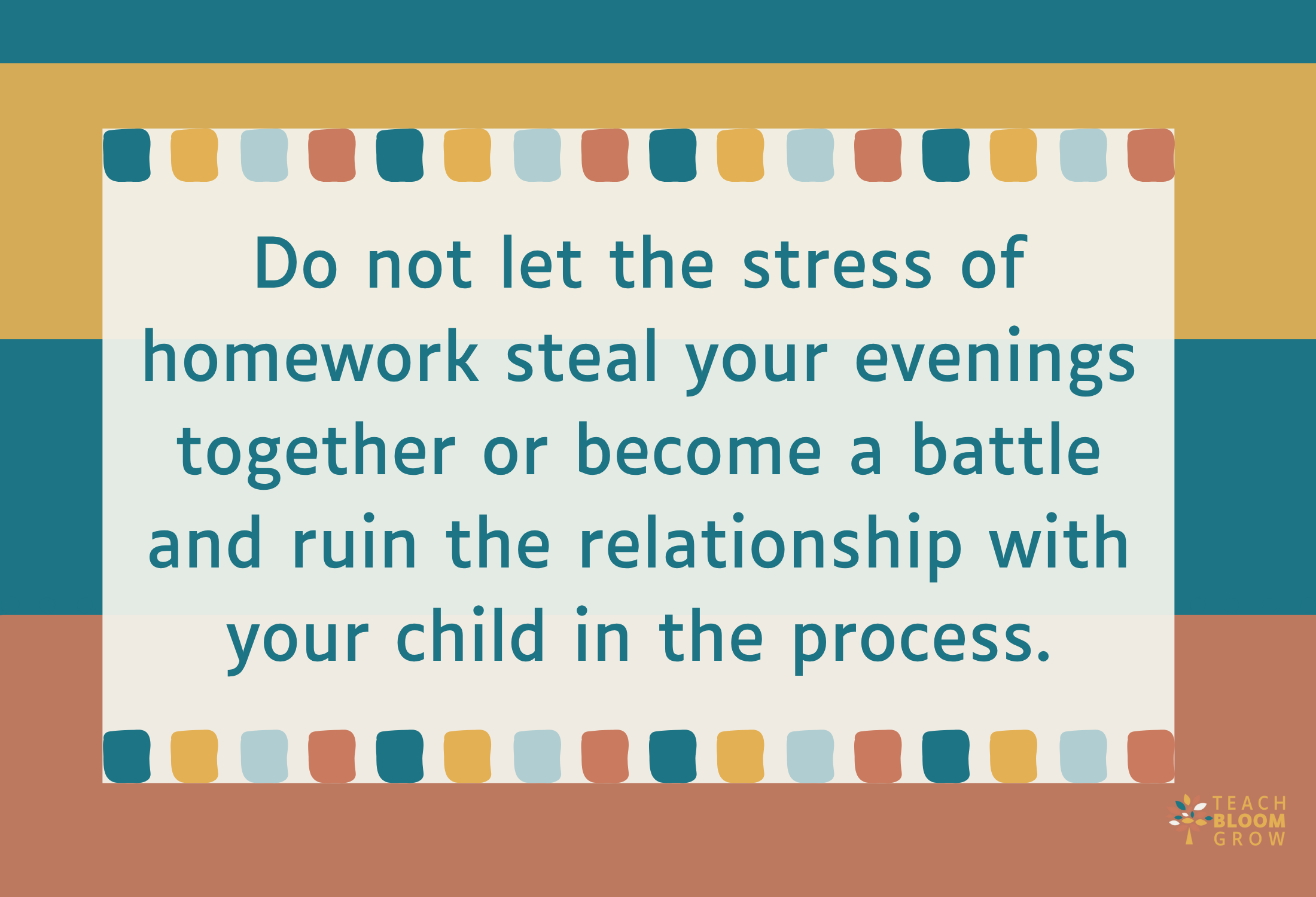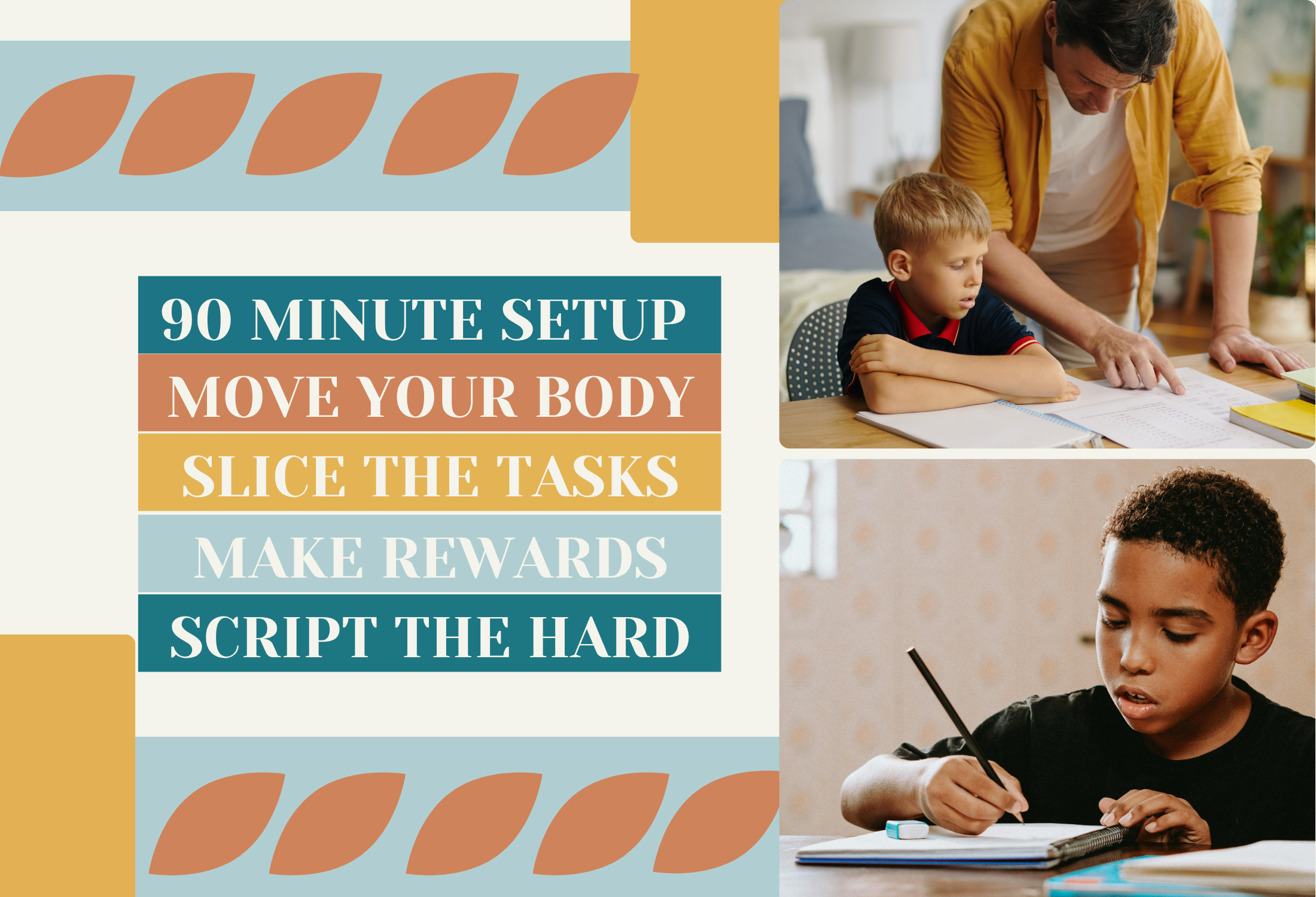ADHD Homework Strategies that Work
In my last post, I shared all about Dyslexia awareness month in October. In fact, October isn’t just Dyslexia Awareness month; it is also ADHD Awareness month! During October we try to better understand and support the millions of children who experience focus and attention differences.
If you’re parenting a child with ADHD, you know the struggle all too well. Papers go missing, emotions run high, and what should be a 20-minute homework session somehow takes hours. As a Structured Literacy Dyslexia Specialist who also works with students who have ADHD, I’ve seen firsthand what helps and what hinders when it comes to after-school routines.
In this post, I am going to go through five simple yet practical ADHD homework strategies that you could start using tonight! The suggestions I have included are backed by recent research and guidelines, so just know you’re not trying something that “might help.” These are evidence-based strategies. As a Structured Literacy Dyslexia specialist who also supports students with ADHD, I’ve seen what works and what doesn’t when it comes to after-school homework routines. The goal isn’t perfection; it’s all about creating a system that lowers stress, builds focus, and helps your child actually finish their work without tears (yours or theirs!).
If you’d like extra support or help creating a personalized plan for your ADHD child, I’d love to connect. Feel free to reach out anytime for a consultation.
#1 The 90-Second Setup
Before your child starts working, I suggest taking 90 seconds to set the stage. For starters, pick a consistent clue or signal that indicates that we will start working soon. For example, set a kitchen timer, light a candle, or play a “homework song.” According to the Centers for Disease Control and Prevention, brains with ADHD respond best when routines are clear and predictable.
Using a visual timer is another great ADHD homework strategy; timers can be a huge help. This allows your child to see the time counting down. Knowing 10 minutes is left for example, is much more concrete than hearing “we’re almost done.” Finally, try the “Distraction Dump.” Keep a sticky-note pad nearby for when your child blurts out random thoughts or questions. Having a place to jot them down reduces mental load and helps maintain focus. Writing them down helps reduce mental clutter, keeps them focused, and lets them know their ideas are valued and you’ll come back to them later.
#2 The Importance of Integrating Movement
Children with ADHD often need to move in order to focus. I highly suggest alternating between sitting, standing, or moving while working when it is possible. For example, you could include a “micro-breaks” every 10–15 minutes where your child can do some simple movements like stretch breaks or jumping jacks. Additionally, allowing small non-disruptive fidgets or tools (like stress balls, putty or textured objects) to channel movement in non-distracting ways can be another great option. These ADHD homework strategies are consistent with what behavior-based and organizational training interventions suggest in regards to improving attention and engagement (DuPaul and Stoner 142; Centers for Disease Control and Prevention).
#3 Slice the Task into Pieces
Big assignments can feel really overwhelming, especially for children who struggle with planning, time management, and working memory. One of the most effective ADHD homework strategies is to break larger tasks into smaller, manageable chunks. To make this easier, I often create and use simple checklists with my ADHD students. A “Do–Doing–Done” board is another great visual tool that helps show progress and keeps motivation high. After each chunk of the assignment is completed, pause to celebrate or reflect before moving on to the next step. Celebrating small wins is incredibly important for maintaining momentum. Research, including the HOPS intervention (Homework, Organization, and Planning Skills), shows that helping students with ADHD organize tasks, manage time, and track progress not only boosts homework completion but also reduces conflict (Langberg et al. 425).
#4 Make Rewards ADHD-Friendly
It has been shown that ADHD brains often respond best to immediate, consistent feedback and rewards. Consequently, another great ADHD homework strategy is to provide immediate and consistent feedback and rewards. Children with ADHD often stay more motivated when reinforcement happens throughout the process rather than only at the end. Once you make your checklist or do-doing-done board you can figure out a system to reward your child after each task is completed. Try pairing small rewards with each completed step. This could mean five minutes of a favorite activity, a snack, or a short outdoor break.
Remembering that it is important to reinforce positive behavior by praising effort, focus and persistence, not just correctness. Behavioral studies confirm that reward systems and feedback loops help improve homework performance among children with ADHD (Merrill et al. 301).
#5 Script the Hard Moments
When meltdowns or frustration happen (because they will) having a few calm, ready-to-go phrases can make a big difference. Instead of reacting emotionally, try using grounding statements that acknowledge their feelings and give direction. For example, “I can see this feels big right now. Let’s take a two-minute break and then tackle one problem together.”
or “Which part feels hardest? Let’s start there and do it side by side.” Using one-step, calm directions can be a very helpful ADHD homework strategy. Doing this willl help your child refocus and consequently reduce escalation. Parental-intervention studies show that homes with predictable routines, clear expectations, and calm responses experience fewer conflicts and more consistency during homework time (Gavin et al. 12).
Building Homework Routines That Work
I hope these evidence-backed ADHD homework strategies help make your after-school routine smoother and less stressful. Homework doesn’t have to hijack your evenings or your relationship with your child. With structure, movement, and compassion, you can turn homework time into a more manageable (and even positive) part of your day.
This ADHD Awareness Month, let’s remember it’s not about perfection, it’s about progress. It’s small wins that add up over time.
And if you’d like more individualized support, I’m here to help. You can reach out anytime to create a plan that fits your child’s needs. Together, we can make homework time calmer, more productive, and more successful for your child.
Works Cited
Centers for Disease Control and Prevention. “ADHD in the Classroom: Helping Children Succeed.” CDC, 2024, www.cdc.gov/adhd/treatment/classroom.html.
DuPaul, George J., and Gary Stoner. ADHD in the Schools: Assessment and Intervention Strategies. 4th ed., Guilford, 2014.
Gavin, Barbara, et al. “Parenting Interventions, ADHD and Homework.” Irish Educational Studies, vol. 42, no. 1, 2023, pp. 9–25. Taylor & Francis Online, doi:10.1080/03323315.2023.2174572.
Langberg, Joshua M., et al. “Evaluation of the Homework, Organization, and Planning Skills (HOPS) Intervention for Middle School Students with ADHD.” School Psychology Review, vol.41, no. 4, 2012, pp. 423–441.
Merrill, Brittany M., et al. “Improving Homework Performance Among Children with ADHD: Behavioral, Psychostimulant, and Combined Treatments.” Journal of Attention Disorders, vol. 20, no. 4, 2016, pp. 300–310.



